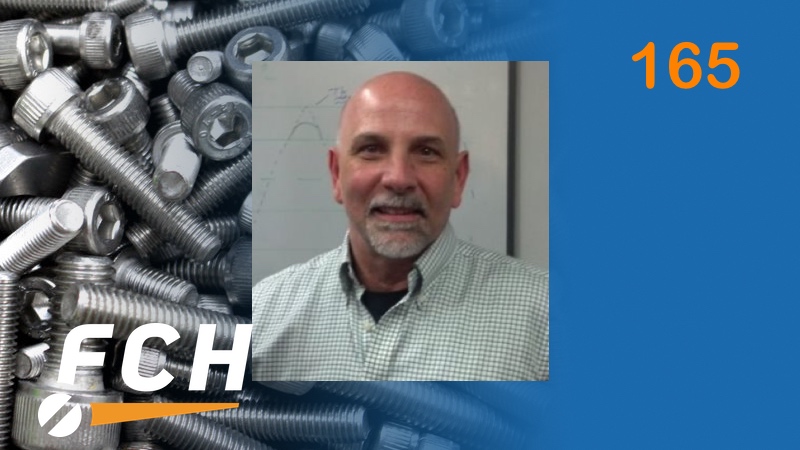This edition of the Fastener Training Minute with Carmen Vertullo was originally published June 19, 2021 as “Why is it that ASTM A574 socket screws do not require a mark, and what about Grade 8 socket head cap screws? ” during episode 165 of Fully Threaded Radio.
Well hello everyone. This is Carmen Vertullo with the Fastener Training Minute coming to you from the Fastener Training Institute and the AIM Testing laboratory, in beautiful, El Cajon California.
Today’s topic comes out of our Fastener Training Institute, Fastener Basics, webinar, the recent version of which covered socket products. And the question. Had to do with the grades of socket products. For example, why is it that ASTM A574 socket screws do not require a mark, and what about Grade 8 socket head cap screws? Can I have or make or provide or specify a Grade 8 socket head cap screw? And then there’s a whole world of metric socket head cap screws. Well, when we come back I’ll explain to you why there are various grades that exists off the shelf and some others that aren’t off the shelf, but maybe oughta be, when we return.
Today we are talking about the various grades of socket products. In the inch world, the primary specification of socket product is ASTM A574 for socket head cap screws. There are some other grades with button heads, and flat heads, but in the alloy steel world, it’s ASTM A574 for socket head cap screws. That’s a high-strength screw 180,000 KSI with the larger sizes at 170,000 KSI and it’s the strongest commercially available fastener that we have. However, from time to time, a user may want to specify a lower strength socket screw and they’ll say I would like to Grade 8.
There are a variety of reasons for this. One of the main ones is avoidance of hydrogen embrittlement. If you choose to plate the product, that Grade 8 socket, head cap screw would be 150,000 KSI. Not as strong as the ASTM A574, but probably perfectly strong for plenty of applications. And in those other products such as the button heads and the flat heads, because of the head configuration, those products probably can’t even take full advantage of the material strength of alloy steel. So it would make sense to dial those back a little bit, but those things just simply do not exist in the ancient world off-the-shelf. It doesn’t mean you can’t make them and if the quantity is sufficient, you can make them at a reasonable cost. So, my suggestion is this, when the customer asks for a Grade 8 socket screw, you can quote it. Just quote it being made. If the quantity is large, they probably won’t see a price issue. It can be made from the same material, it’s just quenched and tempered a little bit differently.
In fact, we have taken ASTM A574 socket head cap screws and tempered them back to make them into grade 8 strength products. They would not have the Grade 8 Head Mark, though the customer probably doesn’t care about that. But my suggestion is this to anyone who’s a socket manufacturer out there, and I made the suggestion in the webinar; we need to develop an off-the-shelf product line of grade, 8 socket, screws socket, head cap, screws, button heads, flat heads, low heads Maybe even Grade 5, which would be even less expensive because those would not be made of alloy steel; those can be made of boron steel. Even the Grade 8s could be made of boron steel.
So we don’t have that in the ancient Imperial world. Somebody needs to make them because most of those buttons and flats aren’t even used in high-strength applications. People use them because they like the way they look.
if we look at the metric World they have this completely covered because all of those products, the button heads, the flat heads, the socket head cap screws, the low heads, they even have a thing called an extra low-head. Those all are available in property classes 8.8, which is like the Grade 5, and property class 10.9 which is like a Grade 8 and of course the 12.9 property class, which is similar to the ASTM A574 socket head cap screw. That’s why it’s much easier to get metric, plated socket screws without the risk of hydrogen embrittlement because they are readily available in those lower strength classes which don’t have the hydrogen embrittlement risk.
Well, I hope you have learned something there, and I hope someone will take up my suggestion, to develop a line of inch socket products that are Grade 5 and Grade 8, so that we can catch up with the metric world.
This has been Carmen Vertullo with the Fastener Training Minute. Thanks for listening.




![[GC2610] Solution_FCH Banner_[220x100] copy](https://news.fastenersclearinghouse.com/wp-content/uploads/2025/09/banner_solutionind.jpg)

